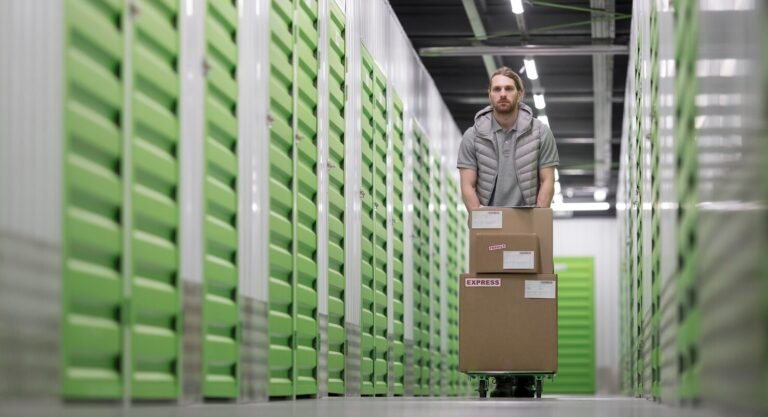How Does Brake Rotor Resurfacing Improve Your Vehicle’s Performance?
Maintaining your vehicle’s braking system is crucial for ensuring optimal performance and safety. Among the essential components of the braking system, brake rotors play a pivotal role. Over time, these rotors can wear down, becoming uneven or damaged. One effective solution to restore them is brake rotor resurfacing. But how exactly does this process enhance your vehicle’s performance? In this article, we’ll delve into the benefits, processes, and key aspects of brake rotor resurfacing, providing you with a comprehensive understanding.
What is Brake Rotor Resurfacing?
Brake rotor resurfacing is the process of restoring the surface of the brake rotors to a smooth, even finish. Over time, the rotor surfaces can develop grooves, rust, and other imperfections due to the friction between the brake pads and rotors. These imperfections can result in decreased braking efficiency and even cause vibrations when applying the brakes. Resurfacing involves using a lathe or specialized equipment to remove a thin layer from the rotor’s surface, ensuring it is smooth and even.
Why is Brake Rotor Resurfacing Important?
Brake rotor resurfacing offers several critical advantages for maintaining vehicle performance:
- Improves Braking Efficiency: A smooth rotor surface allows for better contact between the brake pads and the rotors, resulting in more efficient braking. This ensures that your vehicle stops more quickly and safely.
- Eliminates Vibrations and Noise: Uneven rotors can cause vibrations in the steering wheel when braking. Resurfacing the rotors helps to eliminate these vibrations, providing a smoother and quieter driving experience.
- Extends the Life of Brake Pads: Rough or uneven rotors can cause brake pads to wear down more quickly. Resurfacing the rotors ensures that the pads wear evenly, extending their lifespan and saving you money in the long run.
- Cost-Effective Maintenance: Rather than replacing the entire rotor, resurfacing is a more economical option. It restores the rotor to optimal condition, allowing you to avoid the higher costs associated with purchasing new rotors.
The Process of Brake Rotor Resurfacing
Understanding the process of brake rotor resurfacing can help you appreciate how it improves your vehicle’s performance. Here’s a breakdown of the steps involved:
1. Inspection of Brake Rotors
Before the resurfacing process begins, the brake rotors must be thoroughly inspected. A technician will check for deep grooves, cracks, or heat spots. If the damage is too severe, resurfacing may not be possible, and replacement would be the better option.
2. Removal of Rotors
Once the rotors have been inspected, they are removed from the vehicle. This process involves disassembling the wheel, caliper, and brake pads to access the rotors. Careful handling is essential to prevent further damage during this stage.
3. Resurfacing the Rotors
With the rotors removed, the resurfacing process can begin. A brake lathe is used to shave off a thin layer of the rotor’s surface, removing imperfections such as warped areas, grooves, and rust. This step ensures a perfectly smooth and even surface, which is critical for optimal brake function.
4. Reinstallation and Testing
After resurfacing, the rotors are reinstalled onto the vehicle, along with the brake pads and calipers. The braking system is then tested to ensure proper operation. This testing step is crucial for ensuring that the resurfaced rotors are functioning correctly, providing improved braking performance.
Signs That Your Brake Rotors Need Resurfacing
Knowing when to resurface your brake rotors can prevent further damage and maintain the safety of your vehicle. Here are some common signs that indicate your rotors may need resurfacing:
1. Vibrations When Braking
If you feel a pulsating or vibrating sensation in the steering wheel when you press the brake pedal, it is often a sign of warped or uneven rotors. Resurfacing can correct this problem by making the rotor surface even again.
2. Squealing or Grinding Noises
Unusual squealing or grinding sounds when applying the brakes can indicate that the rotor surfaces are uneven or have developed grooves. Resurfacing can smooth out these surfaces and eliminate the noise.
3. Visible Grooves or Rust
Inspect your rotors for any visible grooves, rust, or uneven wear patterns. If the surface appears rough or damaged, it is likely time for resurfacing to restore their smoothness.
4. Decreased Braking Performance
If your vehicle takes longer to stop than usual, the rotors could be uneven or worn down. Resurfacing can enhance the contact between the rotors and brake pads, improving overall braking efficiency.
Benefits of Regular Brake Rotor Resurfacing
Regular brake rotor resurfacing can have a significant impact on the performance and safety of your vehicle. Here are some of the key benefits:
1. Enhanced Vehicle Safety
Safety is paramount, and a well-maintained braking system is crucial for preventing accidents. By resurfacing the rotors, you ensure that your brakes function efficiently, reducing stopping distances and improving overall vehicle safety.
2. Smoother Driving Experience
Resurfaced rotors contribute to a smoother, vibration-free driving experience. This is especially important for those who frequently drive on highways or long-distance trips, as it reduces driver fatigue and enhances comfort.
3. Cost Savings on Brake Maintenance
Investing in resurfacing rather than replacing rotors can result in significant cost savings over time. It allows you to extend the life of both the rotors and brake pads, minimizing the need for costly replacements.
4. Environmentally Friendly Solution
Resurfacing your brake rotors rather than replacing them is a more environmentally friendly option. It reduces waste and the demand for new parts, contributing to a more sustainable approach to vehicle maintenance.
When to Opt for Replacement Instead of Resurfacing
While resurfacing is often a practical solution, there are situations where replacement of the rotors is more appropriate. Here are some scenarios when replacement is necessary:
- Excessive Rotor Thickness Variation: If the rotor has worn down beyond the manufacturer’s minimum thickness specifications, it should be replaced rather than resurfaced.
- Deep Cracks or Heat Spots: Severe damage, such as deep cracks or heat spots, indicates that the rotor is compromised and needs to be replaced for safety reasons.
- Repeated Resurfacing: If a rotor has been resurfaced multiple times, it may no longer have enough material left for further resurfacing, necessitating replacement.
Conclusion: The Impact of Brake Rotor Resurfacing on Vehicle Performance
Brake rotor resurfacing is a critical aspect of maintaining a vehicle’s braking system, ensuring that the rotors remain in optimal condition. By addressing issues such as uneven wear and grooves, resurfacing restores the smoothness of the rotor surface, which in turn enhances braking efficiency and extends the lifespan of brake pads. Additionally, resurfacing contributes to a smoother driving experience and offers a cost-effective solution for maintaining brake components. Knowing when to resurface and when to replace rotors is key to keeping your vehicle performing at its best.





